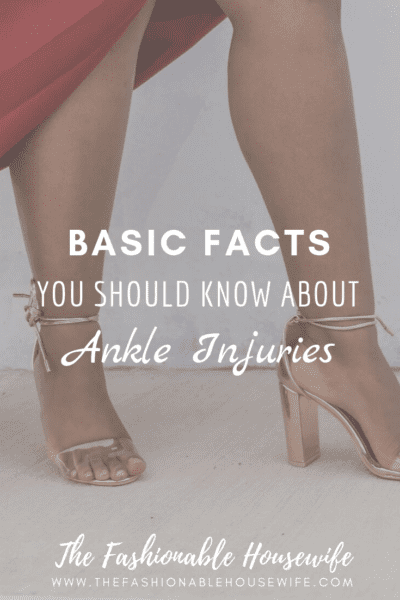
Many people consider ankle injuries to be suffered exclusively by sportsmen and athletes, but not only passionate exercisers can damage their ankle. It does not take much for a twisted ankle to develop into a sprain that requires medical attention, and you may suffer from one if you have done something as harmless as walking on a surface that you did not realize was uneven. These sprains can be very painful, debilitate you and even stop from walking altogether. Here are some facts about ankle injuries that you should consider.
Causes and Risk-factors
Injuring your ankle can happen at any age, but there are two demographic groups that suffer from higher rates of ankle sprain and are hence at increased risk. Men between the ages of 15 and 24 as well as women older than 30 are more likely to suffer from an ankle sprain. It is unknown for sure why this is, but experts suggest that the sense of proprioception could be a culprit. Proprioception relates to an unconscious kinesthetic awareness of your body and all its parts, and if you have poor proprioception, you are more likely to misstep and hurt your ankle. This can occur when your body is growing and changing shape and weight, both of which occur in men between 15 and 24 and women over 30. Men over 50 also tend to increase in weight, but if they have been keeping fit, their body is typically able to recover without the injury developing and debilitating them.
Only 50% of ankle sprains occur during an athletic activity, and the environment can be a significant risk-factor. If it is raining and the ground is wet and slippery or if you live in an area with uneven paths (e.g. cobble or dirt), then you will want to pay extra attention to your feet. There are other preventatives, like stretches and exercises, that can also help.
Types of Injuries
There are three places your ankle can get injured: your bones, ligaments or tendons. At the ankle, three bones conjoin, the tibia, fibula and talus, which are held in place by ligaments. Tendons differ to ligaments in that they hold your muscles to your bones. If you have damaged bone tissue, this is typically in the form of a fracture and can be immensely painful and require a long time to heal. Ligament sprains happen every day, but normally in the form of microscopic ligament tears. If your muscles or tendons are pulled or stretched too far, this results in what’s referred to colloquially as a sprain. These tend to be less serious and heal faster but can still be painful. Check out the online patient education from Big Foot and Ankle Podiatrist for highly detailed information that could help you identify which injury you might be suffering from.
Now that you know the basic reasons for ankle injuries and the potential areas of damage that may occur, you are equipped with the bare minimum you need to reduce the likelihood of injury. After all, an ankle injury is much less life-threatening than a brain injury.
Understanding how injuries occur can develop an awareness of unhealthy behaviors that may increase risk. If you maintain an awareness of your body, especially your feet, your risk of a nasty sprain will be decreased. If you do end up injured, knowing the tissue that may be impacted can help you decide whether to try to walk it off or seek medical attention.



